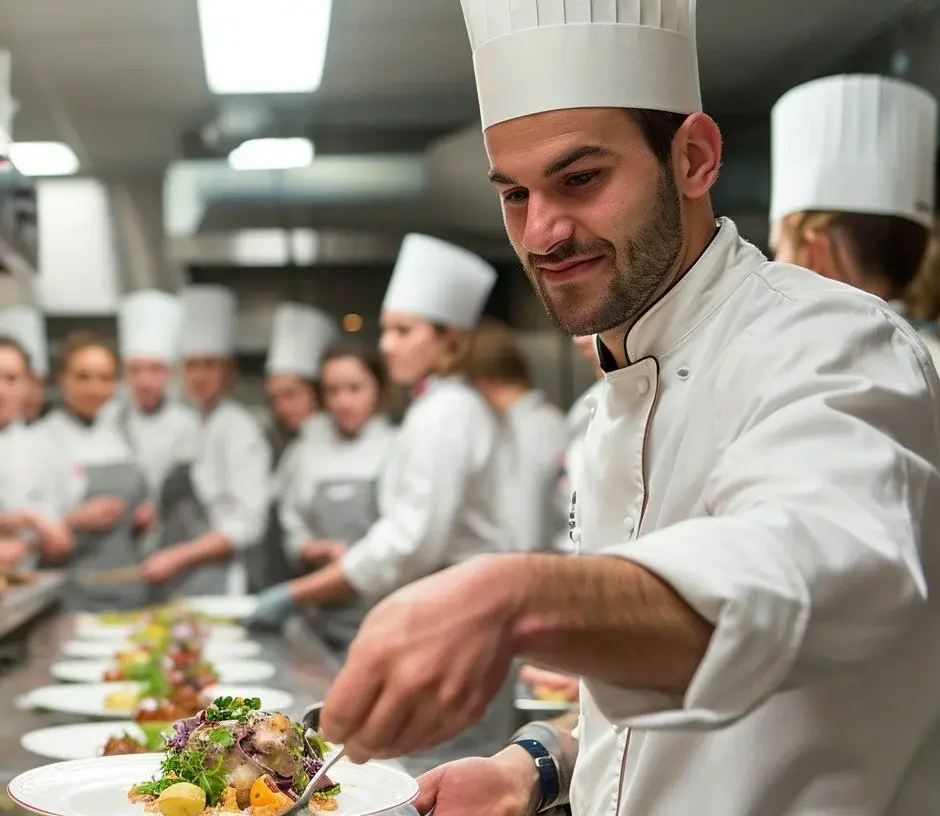Providing safe and hygienic food is a top priority in the food industry. Customers trust food manufacturers and restaurants to meet food safety standards. To maintain this trust, kitchen hazards must be controlled to prevent contamination and customer harm. One such hazard control is using a colour-coded chopping board system in the kitchen so that low and high-risk food types do not mix. Assigning different colours to chopping boards for different food types is a good kitchen practice that will help prevent cross-contamination. Using colour-coded boards is also a HACCP practice for hazard analysis and contamination control.
Understanding Different Colour-Coded Chopping Boards
No law says you have to use specific-coloured chopping boards in kitchens. However, it is wise to follow the common practice of colour-coding to prevent microbial contamination. For kitchen safety, chefs and cooks must know what each chopping board colour means.
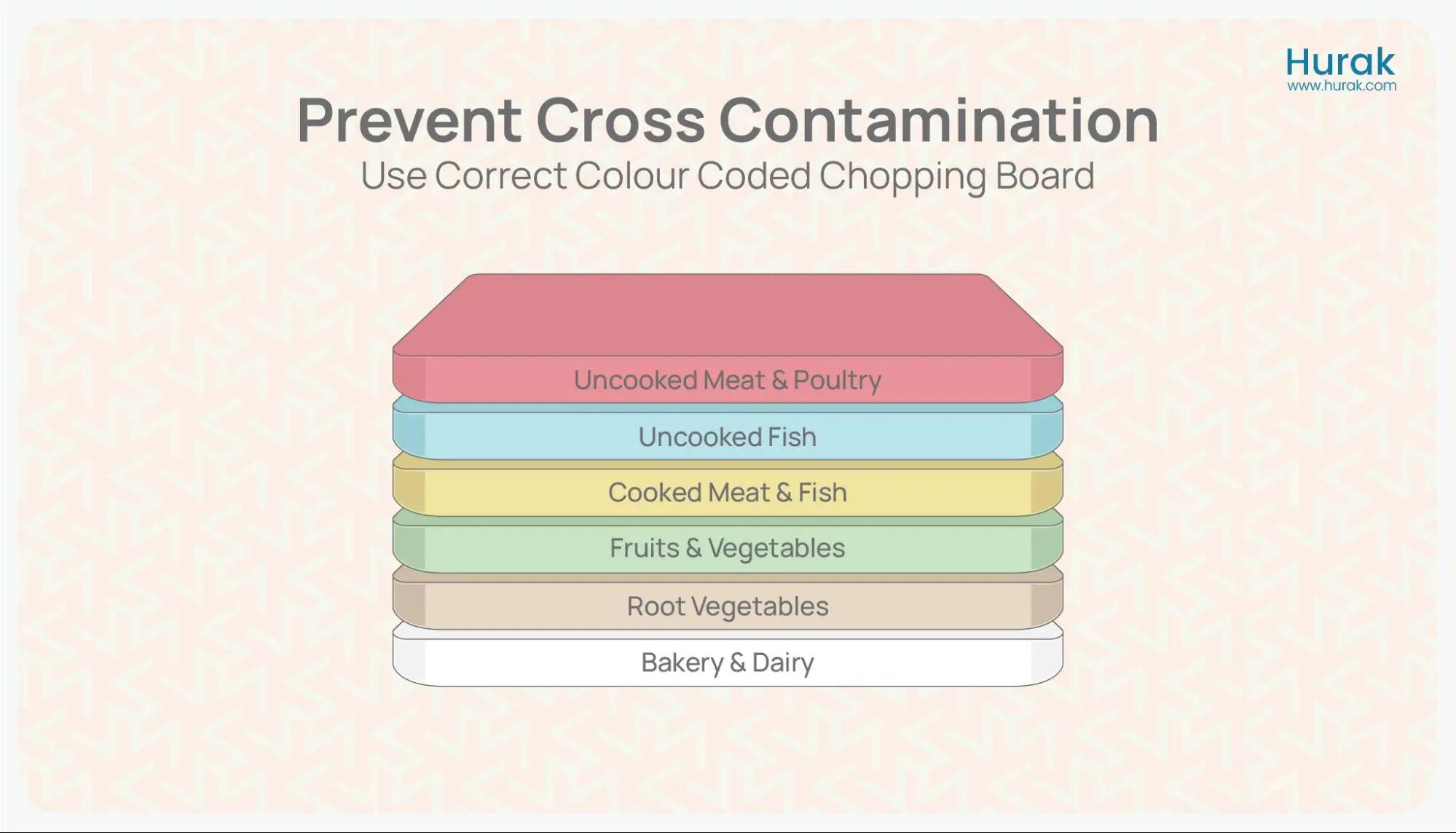
What Colour Chopping Board Should Be Used?
Keeping a red-coloured chopping board in sight is advisable if you regularly deal with raw meat. For cooked meat, use a yellow chopping board. A white chopping board is typically used for dairy food and bread, while a blue one is used for handling raw fish. The brown board is used for unwashed vegetables, while green is used for fresh fruits and vegetables.
Get Online Food Safety Courses
Food Hygiene And Safety
Check the CourseRated Excellent
on major review sites
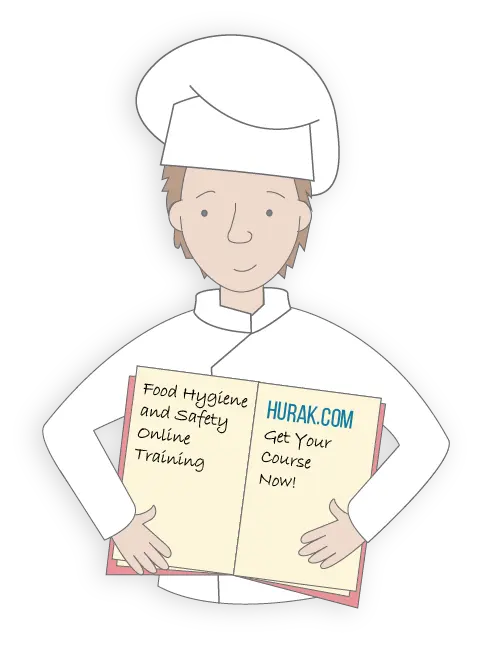
Red – Raw Meats
Red chopping boards are used for raw meat and poultry. Given their high risk of causing foodborne illnesses, reserving these boards solely for handling uncooked meats is essential.
The red chopping board can cook, marinate, or debone raw food. However, use it solely for raw meat to prevent cross-contamination between raw and ready-to-eat food.
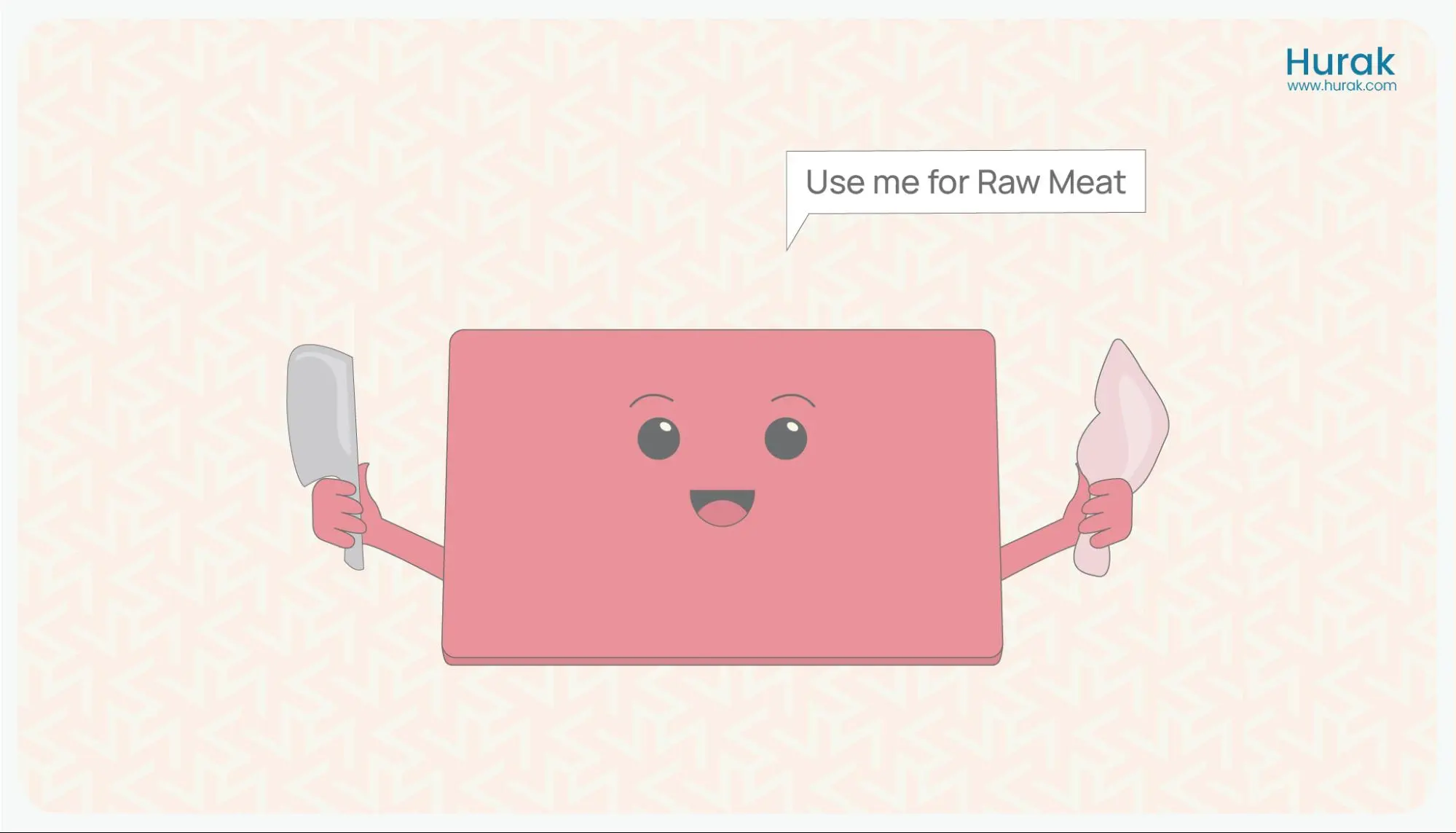
Yellow – Cooked Meat and Fish
Yellow chopping boards are used strictly for cooked meat and fish. Using them for raw animal products compromises food safety standards. The yellow board is specifically designed for slicing or deboning cooked meats:
- beef joint
- roasted chicken
- ham, salami, and turkey slices
- cooked salmon
- cooked trout
White – Dairy and Baked Goods
White chopping boards serve a dual purpose, catering to dairy and bakery items. From slicing cake to grating cheese, they carry out many tasks. However, washing the board between uses is essential due to the risk of cross-contact contamination caused by potential allergens. Having separate boards for dairy and baked goods is an option, but it may not be practical. Therefore, it is advisable to reserve white chopping boards for non-allergenic food items to confirm safety.
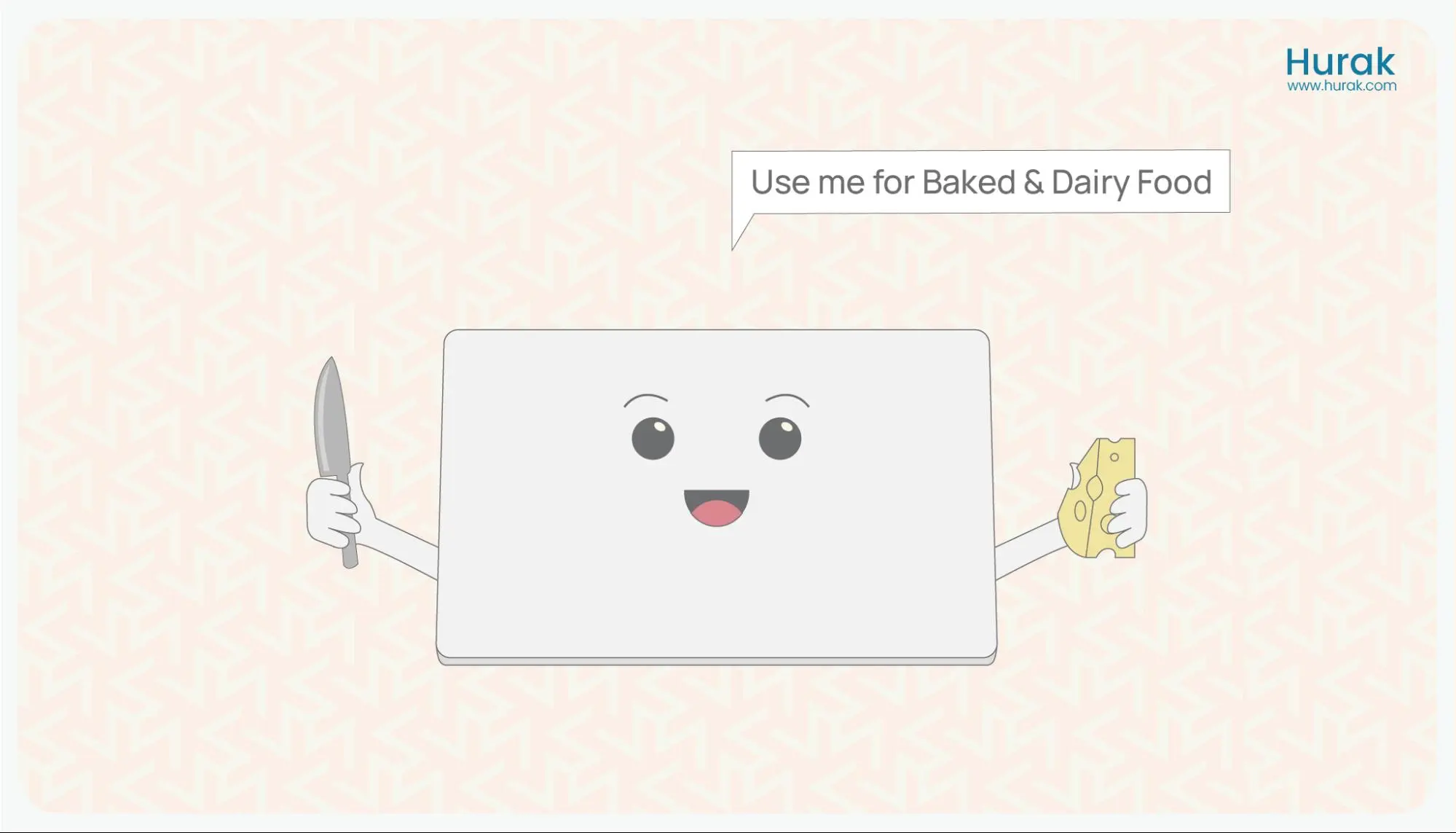
Blue – Raw Fish
Blue chopping boards are used for raw fish. Given the high risk associated with raw seafood, limit the use of blue boards solely to handling uncooked fish. Thoroughly clean the chopping board daily to maintain hygiene standards.
Therefore, when it comes to raw fish, turn to the blue chopping board. Examples include:
- Raw cod
- Raw haddock
- Raw tuna
- Raw salmon
- Raw prawns
- Raw mussels
Brown – Root Vegetables
Brown chopping boards are intended for preparing uncooked root vegetables like potatoes and carrots. These vegetables often retain traces of soil, making them prone to microbial contamination. By using brown boards exclusively for this purpose, cross-contamination risks are minimised.
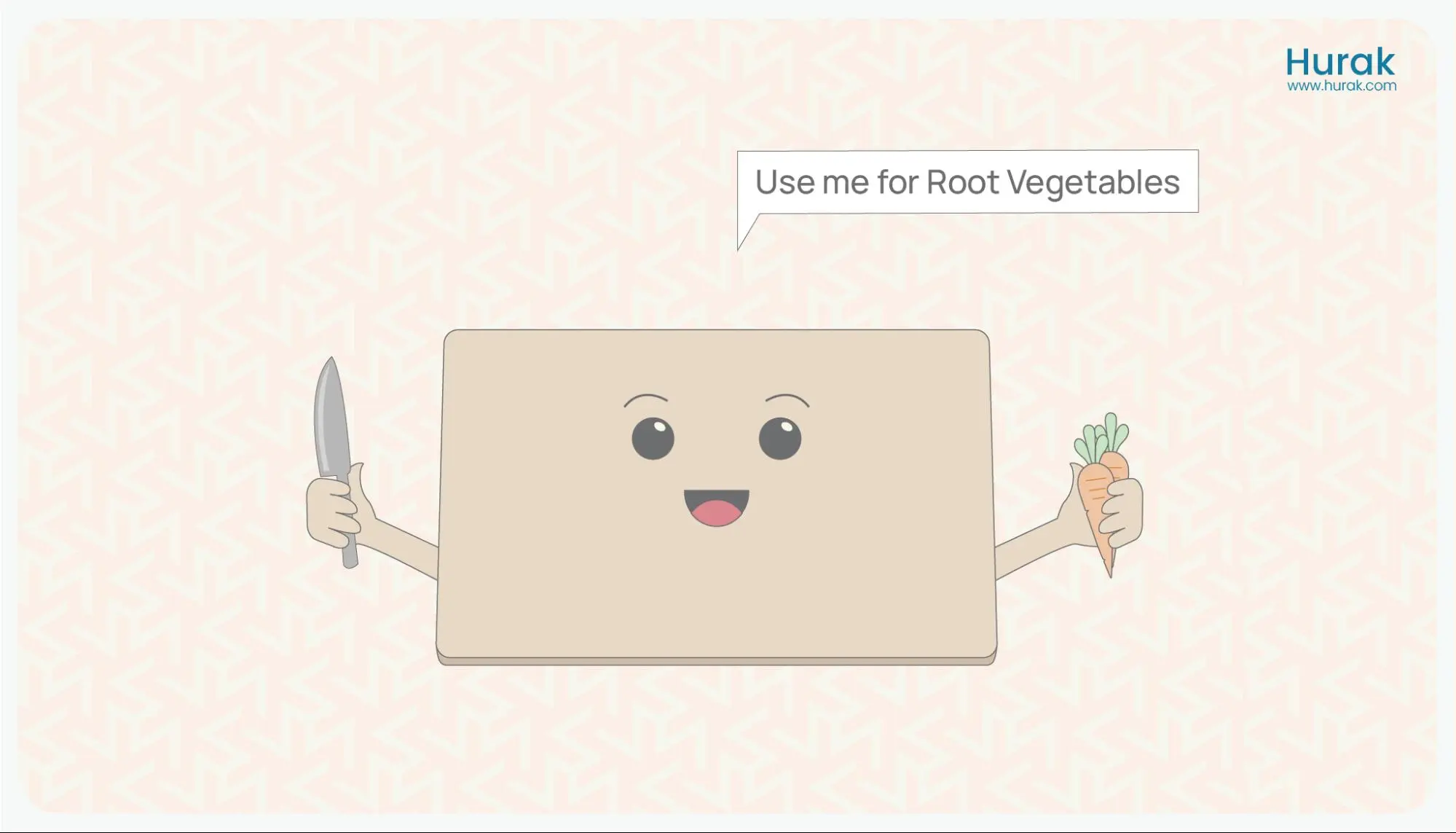
Green – Washed Fruits and Vegetables
As the colour suggests, a green chopping board is used to wash fruits and salad vegetables. It can also be used to cut up fruit, such as apples and bananas, and salad items like tomatoes, peppers, and cucumbers. Do not use the green chopping board for unwashed fruits and vegetables carrying soil; use the brown board instead.
Purple – Allergen-Free Food
Purple boards are dedicated to “free-from” food, especially for people suffering from allergies or food intolerances. Using a separate board for these food helps prevent cross-contamination of allergens for the safety of sensitive individuals. As allergens pose significant risks to certain individuals, it is important to utilise purple boards correctly in the kitchen.
Food such as gluten-free bread relies on the purple chopping board. This practice is smart and prevents allergic reactions. Avoid cross-contact to keep everyone safe from allergens.
Promoting Awareness
A prominent poster of the colour-coded chopping boards in the kitchen reminds the staff to follow the designated colours during food preparation. This can uphold food safety standards and minimise the risk of cross-contamination.
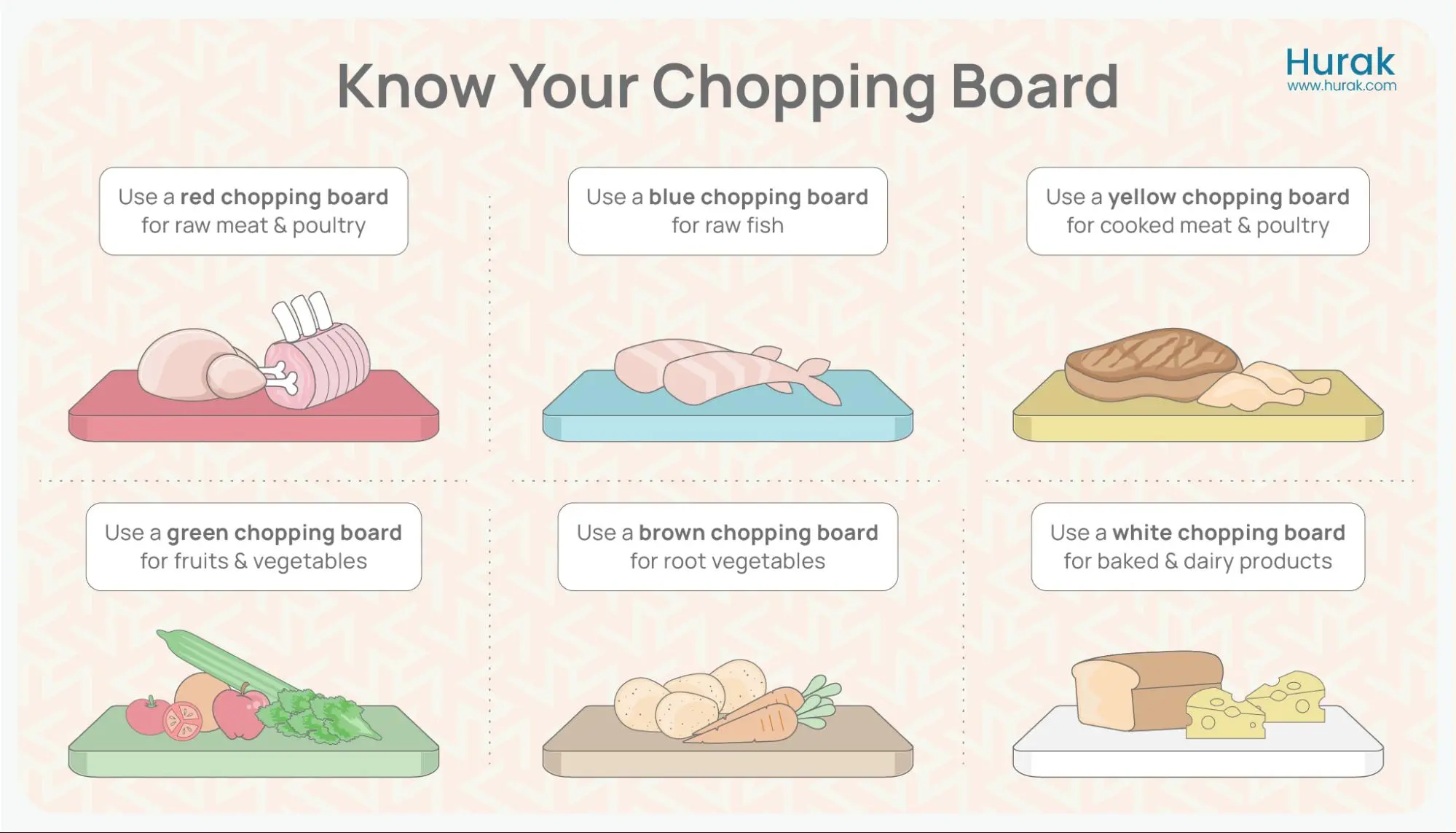
Why Do We Use Different Chopping Boards
Different-coloured chopping boards in kitchens help keep high-risk food separate. They also reduce the chance of cross-contamination and cross-contact among different food types. Chefs can work faster because they instantly know which board to use for each food. We can use the same colour system to make knives extra safe.
Put up a poster in the kitchen to remind everyone which colour board to use for each type of food. It is an easy way to keep things safe when you’re cooking.
Assign specific colours for different food groups, like red for raw meat and yellow for cooked meat. Maintain consistency to prevent cross-contamination. Avoid mixing colours for different food groups to confirm kitchen safety.
The Debate about Using Plastic Chopping Boards for Safety
When chefs choose chopping boards, they consider more than just colours. The material of the board matters, too. The two main options are plastic and wood.
Many people choose plastic chopping boards when handling risky food like raw meat. They believe plastic is safer and easier to clean.
However, experts do not all agree on this. Some say plastic boards are better for hygiene because they do not soak up liquids and are easier to clean.
Knowing When to Replace Your Chopping Board
For food safety, it is important to frequently change your chopping boards. Even with colour coding, old and worn boards can pose risks.
- Deep Knife Scratches: While knife marks are standard, many deep scratches provide a breeding ground for bacteria. If you spot many deep cuts, it is time to replace the board.
- Uneven Surface: A board no longer sits flat on your counter is unsafe. Constant cleaning can cause warping, making it wobble during use, increasing the risk of accidents.
- Accidental Use of the Wrong Coloured Board: If someone mistakenly uses the wrong board for a task. For instance, if you cut raw meat on a board meant for vegetables, replace that board for safety standards.
Conclusion
Colour-coded chopping boards help keep your food and customers safe by minimising microbial cross-contamination and allergenic cross-contact risk. Using separate chopping boards for different food types is a good kitchen practice that controls contamination. Be consistent with your specific chopping boards, and discard those with prominent cracks and damage.


